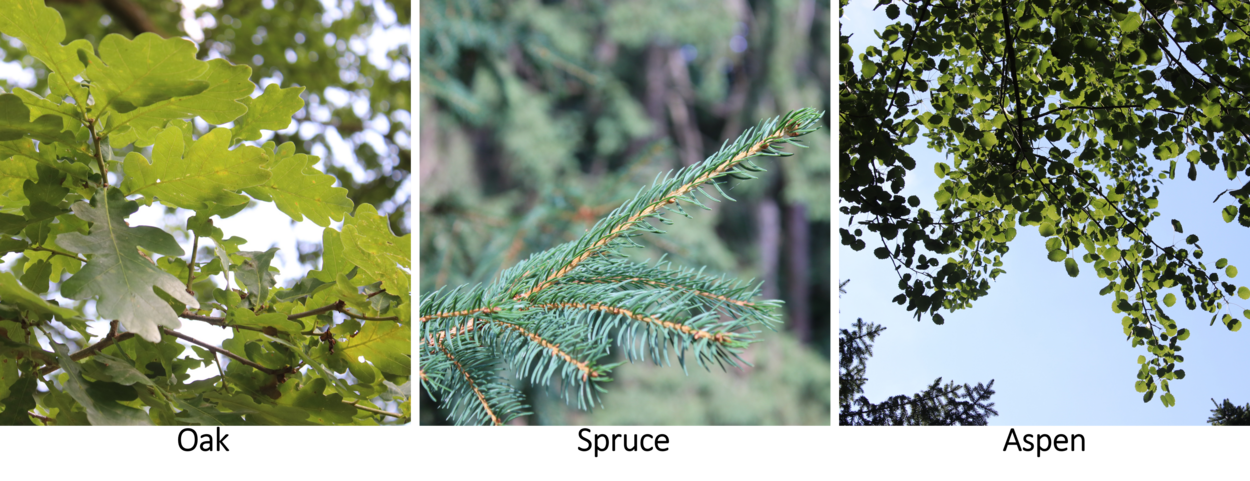The new project, TreeHarm: “Development of diagnostic and treatment methods for the identification and protection of native trees against regulated and new harmful organisms", at the Genome Research group of Thünen Institute of Forest Genetics, Grosshansdorf, Germany.
Climate change is resulting in increasing temperature, dry and hotter summers, causing drought stress to the forest trees. The drought stress to the trees is considered an invitation to the pathogens. Surprisingly, new plant pathogens are taking advantage of the drought stress and damaging the forest trees (https://www.dw.com/en/germany-forest-dying/a-54330242). Although the regional state Schleswig-Holstein has ~ 173,000 hectares of forest land, it still is the least forested area in the Federal Republic of Germany (https://www.schleswig-holstein.de/DE/Fachinhalte/W/wald/wald_01_Allg_01_WaldSH.html ). Therefore, there is a dire need to identify infectious as well as beneficial organism habitats to native forest trees of the Federal state Schleswig-Holstein.
Diagnosis of pathogens
Diagnosis of the fungi, insect, and bacterial species of the three forest tree species will be carried out using DNA barcoding, metagenomics, and morphotyping methods. The genomic regions cytochrome c oxidase 1 gene (“COX1”) (insects) and Internal Transcribed Spacer (ITS) Barcoding regions (https://ibol.org/) will be investigated for insect and fungi species identification, respectively. Whereas, the "INVIEW Metagenome Explore", a high-throughput next-generation sequencing method offered by the company Eurofins Genomics will be used for bacterial community identification.
Novel treatment approaches
For the treatment, two alternative strategies are going to be developed and tested for their practicality: the "mycorrhizal vaccination" and RNA interference (RNAi). The “mycorrhizal inoculation” procedure has been used successfully in tree nurseries for around 100 years. A field trial is to test whether a targeted application of native mycorrhizal fungi (vaccination) can strengthen the individual physical constitution of the trees.
Furthermore, RNA interference (RNAi) based on double-stranded RNA (dsRNA) treatment will be tested against insect and fungal pathogens. Here, double-stranded RNA (dsRNA) with a length of 18 to 26 nucleotides is sprayed onto parts of plants (leaves, shoots) that have been infected with pests (fungi, insects) using high pressure. The dsRNA, which is complementary to parts of the sequence of vital genes in these pathogens, can inhibit or completely switch off the expression of these genes in a highly specific manner via interference. The advantages of the "RNA vaccination" compared to conventional pesticides are manifold: (i) High specificity: the defense against the pathogen is very specific, (ii) no residues: RNA molecules are broken down very quickly, (iii) no resistance: it is almost impossible that pests and pathogens can become resistant to this type of control.
Funding from the federal ministry
The "TreeHarm" project, funded for three years by the Federal Ministry of Food and Agriculture and the Federal Ministry for the Environment, Nature Conservation and Nuclear Safety through the Fachagentur Nachwachsende Rohstoffe has set itself the goal of using oak, spruce, and poplar. The project parallelly focuses on diagnosis and treatment measures, creating a "hand-in-hand" strategy to cope with climate change before it is too late. The project has been started in May 2021, under the supervision of PD Dr. Matthias Fladung by Dr. Kiran Singewar (research fellow) and Marika Pusch (technical assistant).
Authors: M. Fladung, K. Singewar

![[Translate to English:] [Translate to English:]](/media/_processed_/f/3/csm_2022_Titelbild_gross2_Saatgut_in_Hand_9ffb8f5748.jpg)
![[Translate to English:] [Translate to English:]](/media/_processed_/f/3/csm_2022_Titelbild_gross2_Saatgut_in_Hand_c17270fcc0.jpg)




